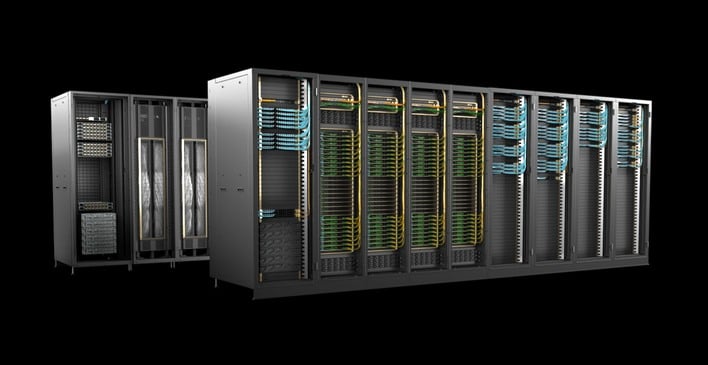NVIDIA And Oracle Collaborate On Beastly 100K Blackwell GPU AI Supercomputer For U.S. DOE
Now, that number deserves a little decoding. The traditional TOP500 supercomputer list rates machines by double-precision 64-bit (FP64) Linpack performance. On that scale, the DOE's existing heavyweights, El Capitan at Lawrence Livermore, Frontier at Oak Ridge, and Aurora at Argonne—post theoretical peaks of 2,746 PFLOPS, 2,055 PFLOPS, and 1,980 PFLOPS respectively—far, far below NVIDIA's quoted figure.
Still, the systems mark a leap in scale for public scientific computing. NVIDIA doesn't say whether the Blackwell GPUs would be the original Blackwell GB200 Superchips or the new GB300 Blackwell Ultra parts, but either way it's the same architecture underpinning the Grace Blackwell platforms deployed in major cloud data centers. Solstice and Equinox will tie into Argonne's experimental facilities, such as the Advanced Photon Source. The goal is to let researchers build "agentic AI" models that can reason about data and autonomously design and test hypotheses across materials science, energy, climate modeling, and healthcare.
Oracle's role in this arrangement comes through its Oracle Cloud Infrastructure, which will provide the high-bandwidth fabric and sovereign-cloud environment for DOE workloads. The partnership fits into the Trump administration's ongoing rhetoric around "AI leadership" and domestic compute capacity. NVIDIA CEO Jensen Huang described the machines as "America's engine for discovery."
No matter how one parses the metrics, Solstice will absolutely be one of the most powerful AI systems on the planet, and likely for years to come. It's not necessarily clear that agentic systems will be more useful than classical supercomputing, but we'll see what happens when Equinox comes online in the first half of next year.


